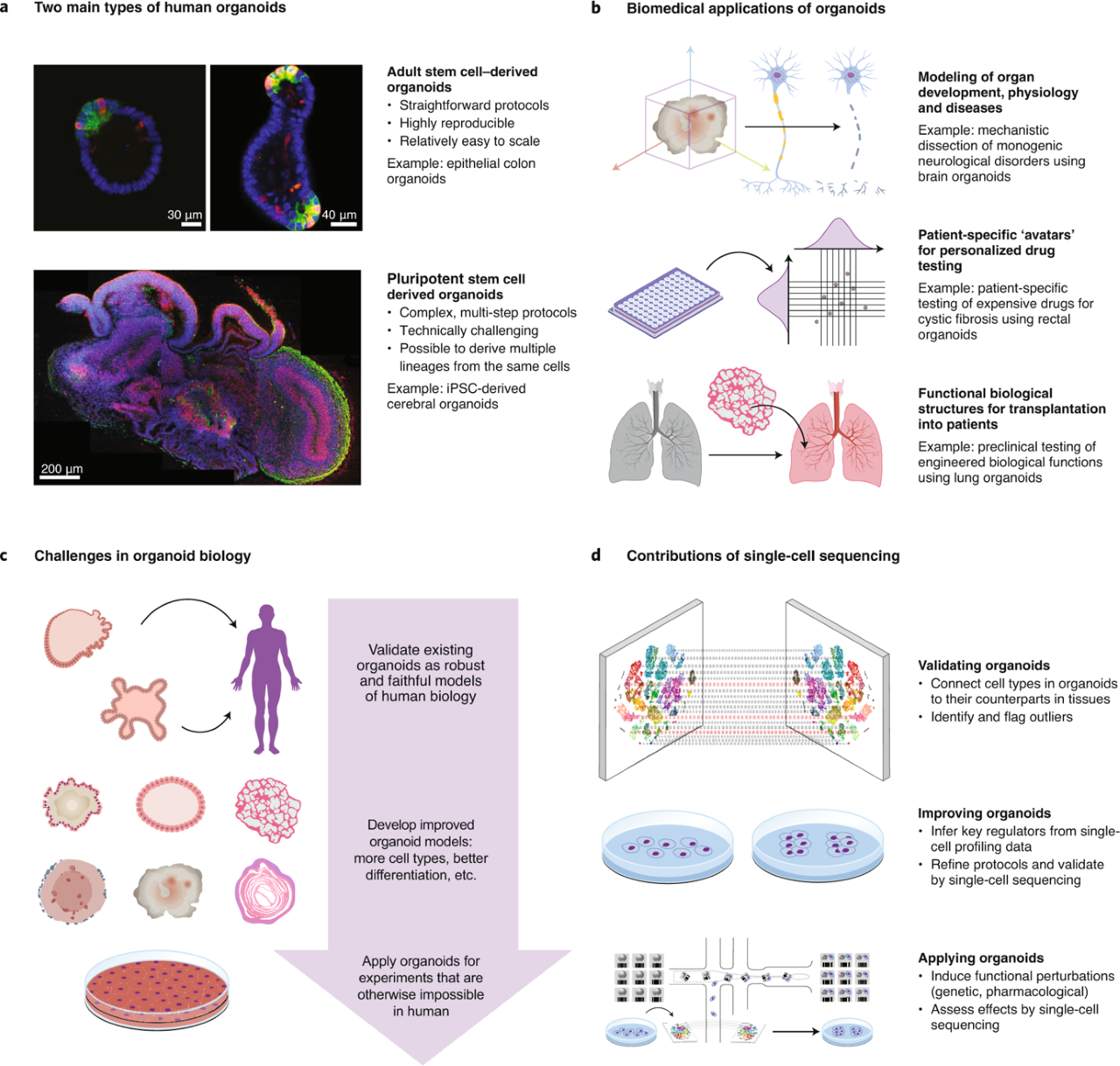
Human organoids : Soon to replace animal models?
Scaffold based cell culture systems namely organoids are reviewed as a promising option for studying biomedical applications. Human organoids are a tool for drug screening and study disease progression. These 3D cell cultures replicate important aspects of the in-vivo micro-environment necessary for organ development and biological functions. They are reliable cell culture models to trace human patho-physiology aiding researchers to study biomolecular pathways associated with disease, and investigate possible treatment options, while reducing or even replacing the number of animal models used. (1)
Human organoids : types and applications
The most vital part of creating organoids is the need for comprehensive characterization and validation to efficiently represent the in-vivo physiology found within organ systems. This requires standard quality measures for cell composition, cellular differentiation, cell states and cellular responses to stimuli. Organoids can be cultivated from adult stem cells, which are committed to a specific cell lineage or pluripotent stem cells. Human organoid models are widely used in drug screening and testing, regenerative medicine as well as in studying in-vitro biological functions. (1)
Key challenges in developing organoids
3D culture systems are able to mimic human organ systems albeit with many challenges. Furthermore, 3D culture systems often encounter issues with regards to its ability to account for environmental exposure and aging. Development and modifications of organoids is also used in genetic and recombination studies. Regardless of the challenges faced, 3D cultures still remain the most reliable and translatable option available for regenerative studies for the treatment of diseases along with the ultimate goal of helping with transplantation of the organs in patients. (1)
References
- Christoph Bock , Michael Boutros ,J. Gray Camp4, Laura Clarke5, Hans Clevers6,7, Juergen A. Knoblich8, Prisca Liberali9,Aviv Regev10,11, Anne C. Rios6,12,13,Oliver Stegle14,15, Hendrik G. Stunnenberg12, Sarah A. Teichmann16,17, Barbara Treutlein18, Robert G. J. Vries19 and the Human Cell Atlas ‘Biological Network’ Organoids20,21 : The organoid cell atlas – nature biotechnology ; CeMM Research Center for Molecular Medicine of the Austrian Academy of Sciences, Vienna, Austria , December 2020



